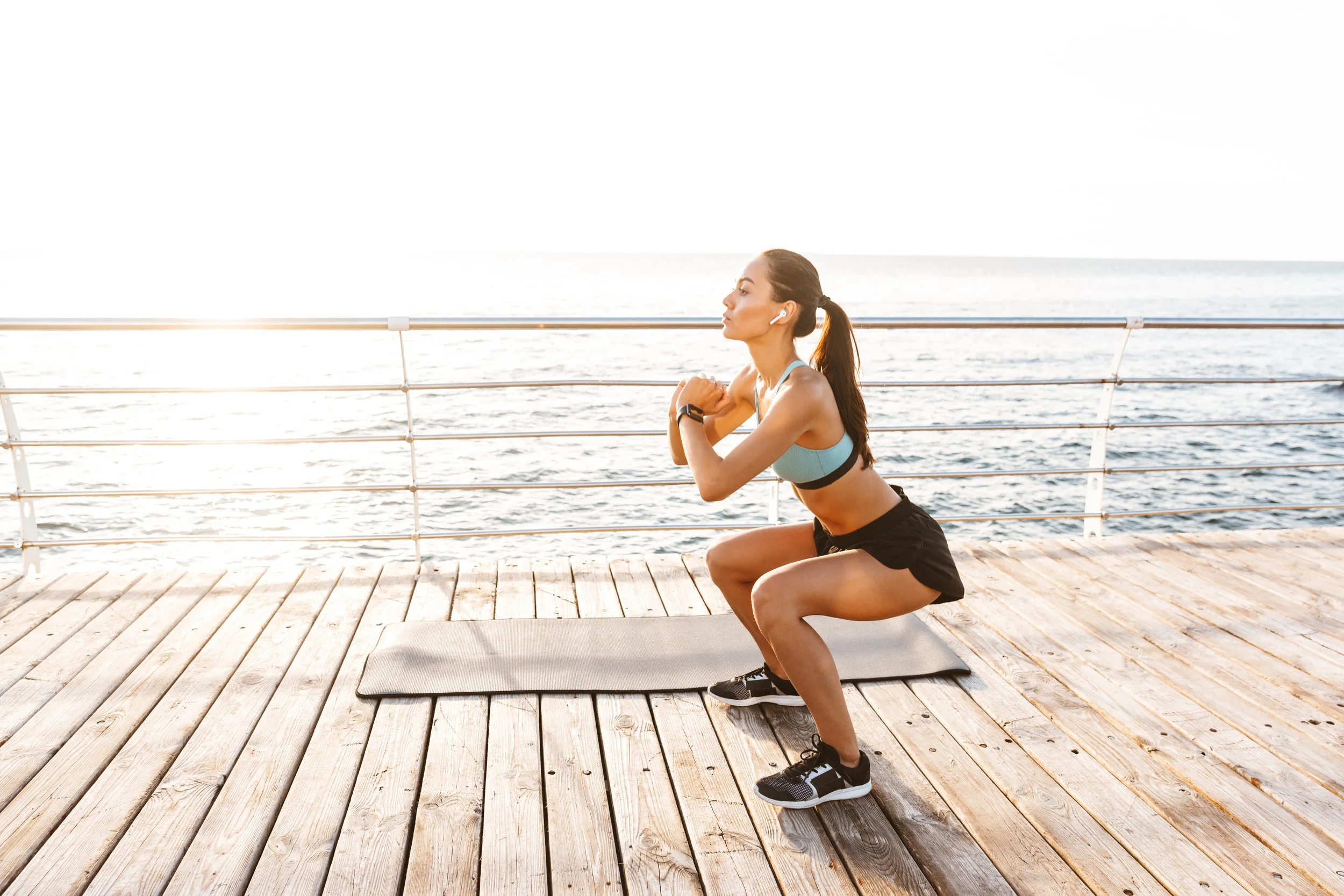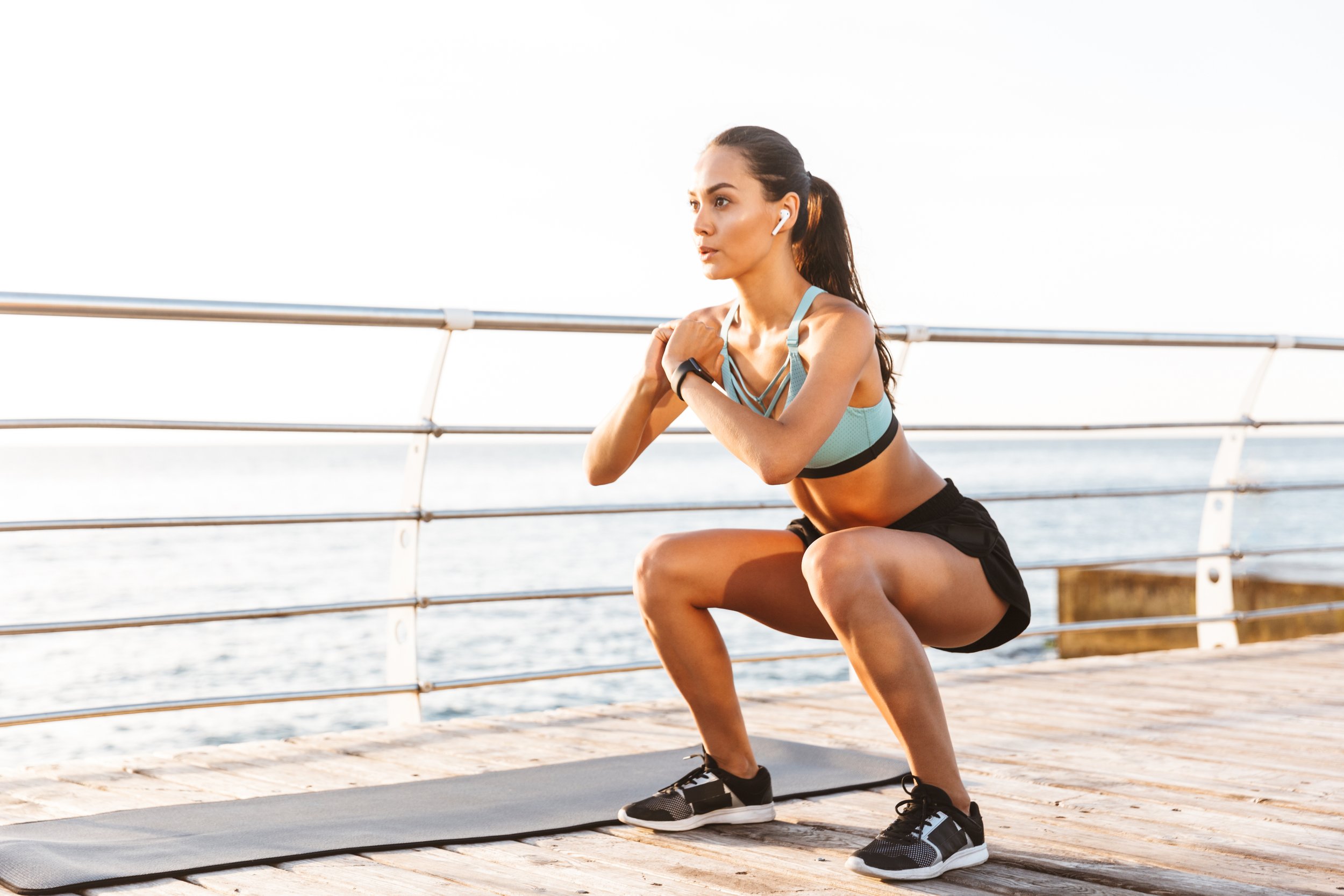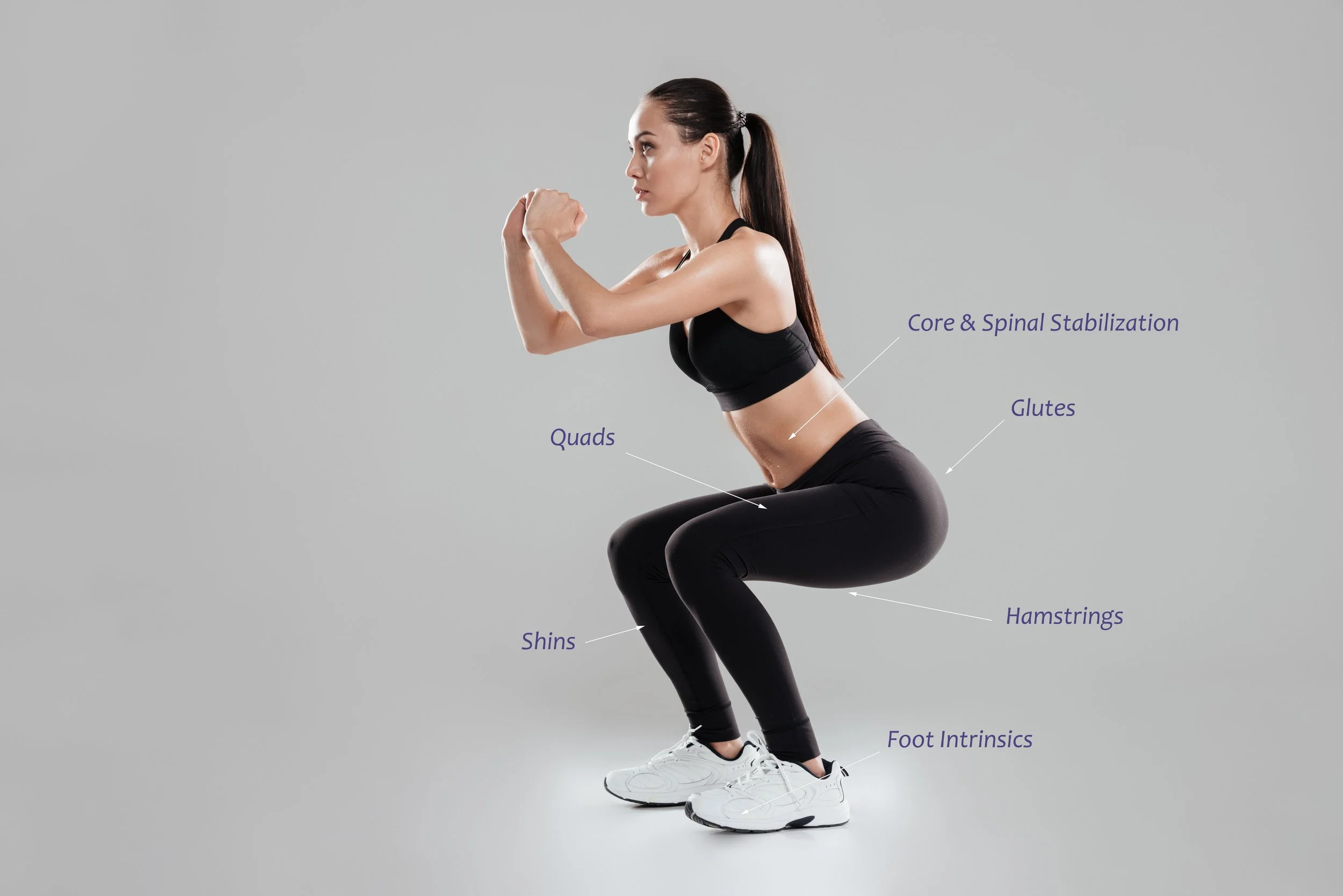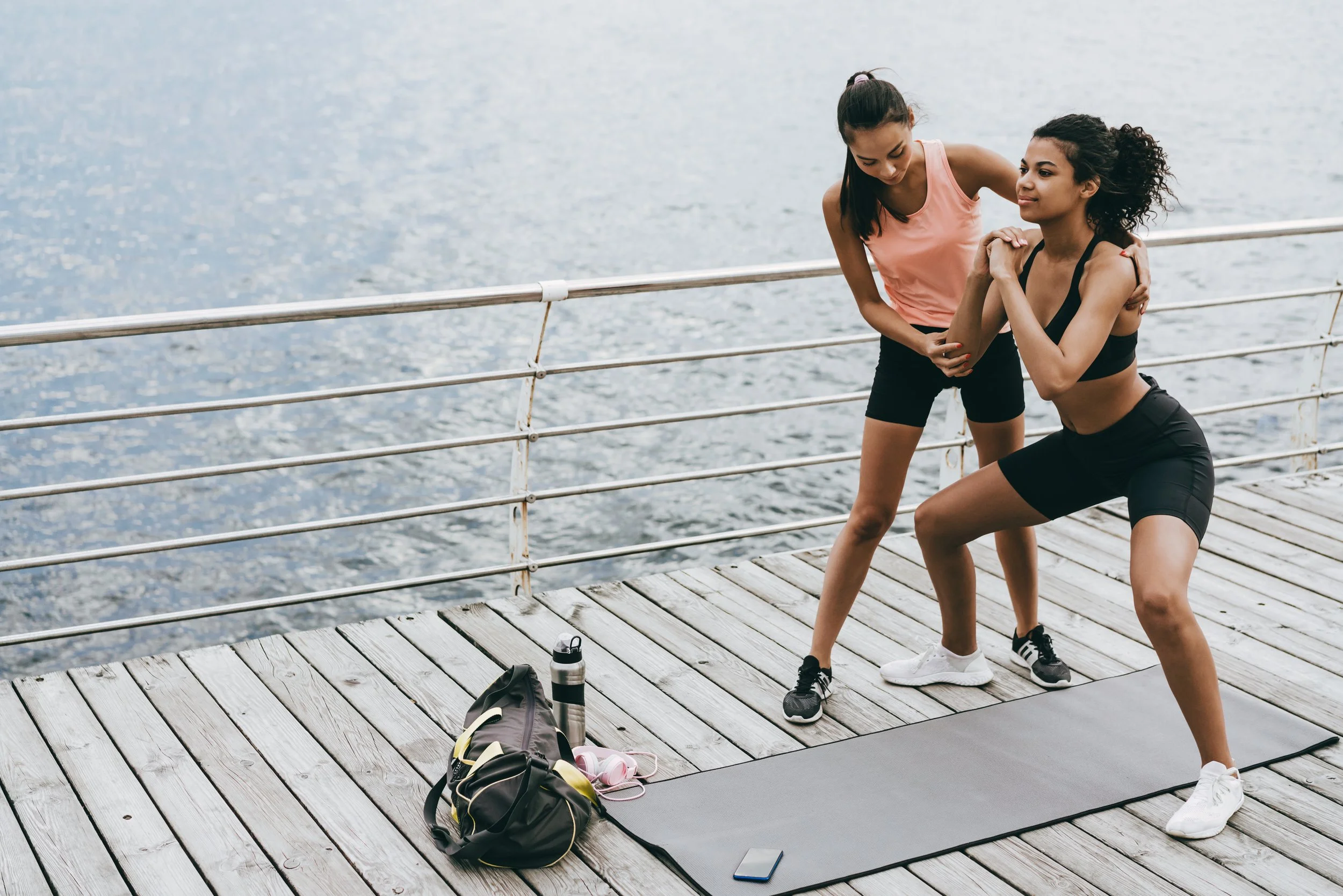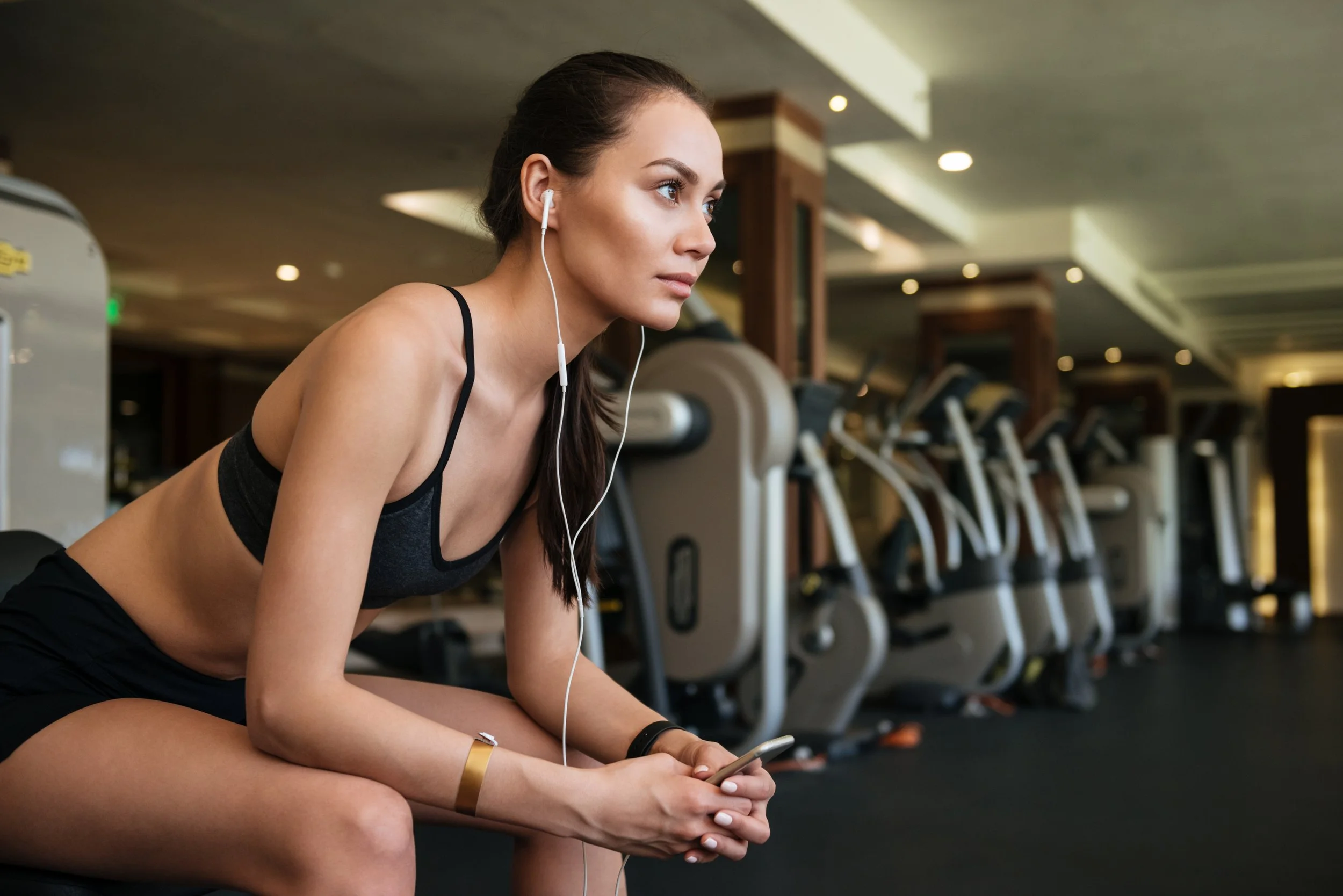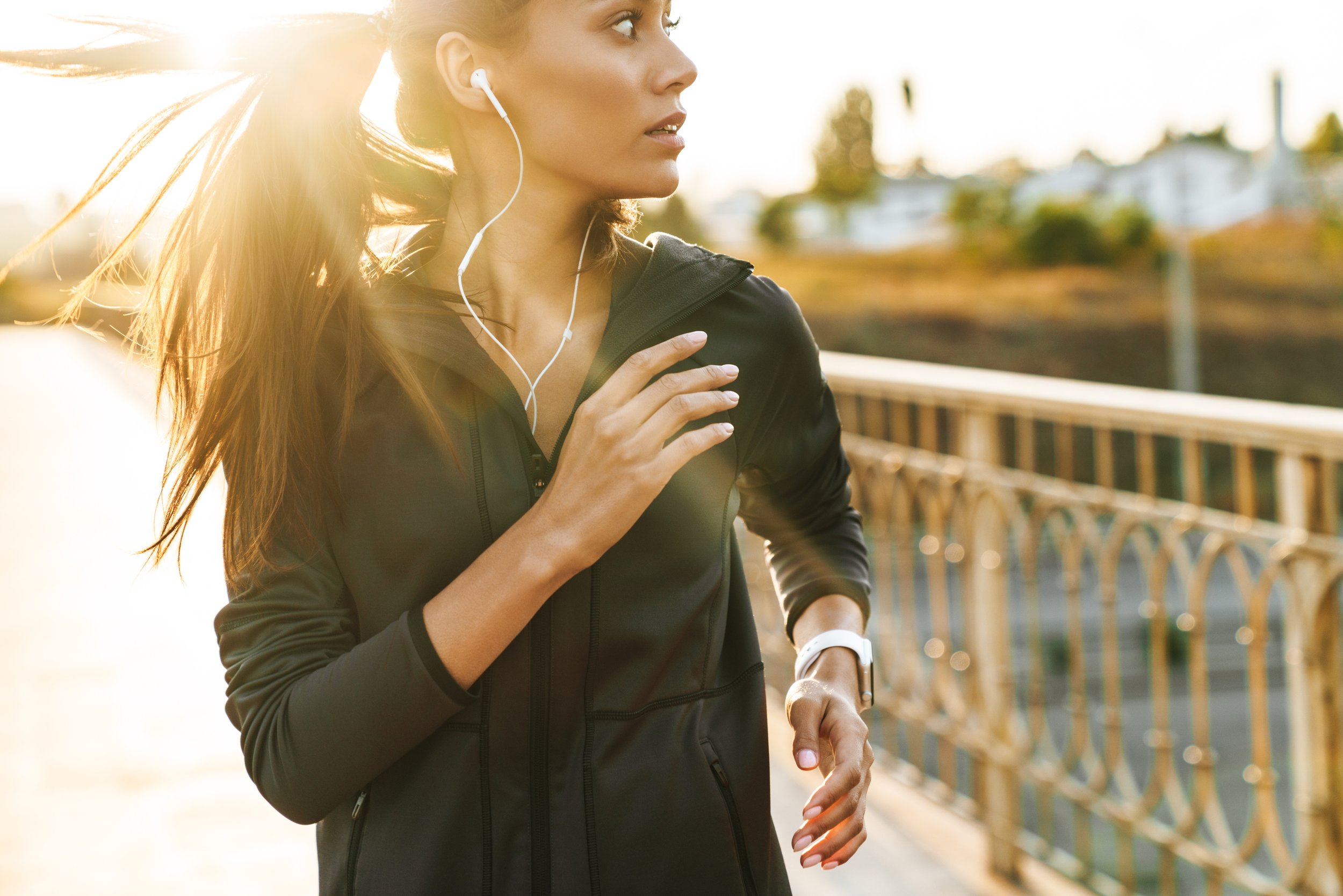What Is a Squat?
A Physical Therapist’s Perspective
Are you a fitness fanatic? A weekend warrior who hits the gym once a week? Or are you someone who has never exercised before? Regardless of the answer, the reality is that you probably squat multiple times a day. Look no further if you have ever asked yourself: is squatting safe? Or Should I be squatting? The purpose of this blog is to provide you with an overview of what happens during a squat, how it is performed, and who should be doing it.
Everyone Squats!
Squatting, or crouching down to a lower position, has been a fundamental movement since the start of humankind. You have literally been doing it since before you could walk. Yes, some people do it better than others, and yes some people have spent years perfecting their form so that they can do it while holding hundreds of pounds. This doesn’t mean that squatting is reserved only for gym rats and Olympic lifters. If you have ever stood up from or sat down in a chair, you have squatted.
““There is no more fundamental movement than the squat. Since the beginning of humans this has been the position to hunt, gather, socialize, ponder, and create. In modern society this will help you continue to garden, walk your dog, play with your kids, CrossFit, ski, and run.””
What are the Squat Basics?
A squat is the movement of lowering the hips from a standing position down and back up again. In the world of fitness, this movement is used to create a load on the body with the goal of improving musculoskeletal or cardiovascular fitness.
Squats are considered one of the “core” lifts, along with deadlifts, pull ups, and other compound movements. Squatting is considered a compound movement because it targets large muscle groups across multiple joints in the body. Squatting can help strengthen the muscles in your butt, legs, core, and back.
The classic barbell squat primarily targets the quad and gluteal muscles. Together with the hamstrings, calves, abductors, and adductors, the weight is lowered eccentrically down toward the floor and then lifted concentrically back to standing. During the lowering phase of the squat, several of your muscles contract as they elongate to control the speed at which you descend. At the hips, the gluteals and hamstrings work to prevent rapid hip flexion. At the knees, the quadriceps serve to slow down the amount of knee bend, and at the feet, the calf muscles work to control how much dorsiflexion occurs in the ankles. During the upward phase of a squat, the same muscles are active in the opposite fashion as they shorten to straighten the knees and hips, thereby returning you to standing. Throughout all this motion, the spinal stabilizer (core) and back (erector spinae) muscles are also active.
“A squat is a necessity for daily living. The longer you can continue to squat correctly and comfortably typically the higher the quality of life.”
How to Perform a Barbell Squat:
1) Approach the bar with your feet turned slightly out at shoulder-width apart. Bend forward and position the bar at or just below your upper trapezius muscle. Prior to lifting the bar off the rack, tighten your lower abdominals by bringing the bellybutton into the spine and bracing. This forms a rigid system to prevent the lumbar spine from arching or bending.
2) Once standing with the bar, slowly lower yourself to a 90-degree knee bend while hinging at the hips. I often recommend you pretend to sit in an invisible chair behind you. You should feel no back arching/bending.
3) Once reaching your low point (approx. 90 degrees), begin squeezing your glutes together and drive them forward as you push your feet into the ground to straighten your knees. The knees, hips, and back should resume a neutral standing position at the top of this maneuver.
4) See one of my favorite educational videos for further assistance:
Squat Depth, Weight lifting Belts, Pitfalls
· How deeply you should squat is widely debated and highly individualized. Proper squat depth depends on your anatomy, the strength of your legs/core, and the health of your joints. For further recommendations from a physical therapist’s perspective, see my blog post on squat depth: Cross-Fit Squat Depth — Lake Washington Physical Therapy (lakewashingtonpt.com)
· Knees over toes?! You will often hear people say not to let your knees go over your toes during a squat. This is a recommendation, not a rule. Experienced weight-lifters will tell you that the knees do in fact move toward the toes during a correct squat. For beginners, I often use the cues of not letting your knees go over your toes and keeping your weight back on your heels. These steps help reduce the stressful forces on your knee and prevent the common mistake of excessive weight shift forward.
· Should you use a weight-lifting belt? This is yet another topic up for debate with multiple factors that need to be considered. Weight belts can be useful when lifting heavy weights around your 1-5 rep max. However, most individuals will benefit more from the core strengthening that occurs with a squat. For this reason, I usually recommend patients manually brace the lumbar spine rather than use external assistance. For further discussion on the weight-lifting belt, see my previous post:
BOTTOM LINE with Squating
· Squatting is a fundamental movement that is a part of human nature. If you don’t believe me, pay close attention to young children next time you see them playing. They constantly squat down to the ground. Watch their form! The back is straight; knees are bent with feet flat on the floor as they reach down to manipulate a toy. When they stand back up, you have witnessed great squat form.
· When done correctly, squatting can be good for weight-lifters, couch potatoes, and everyone in between. I teach correct squat mechanics to nearly all my low back and knee pain patients.
· Squatting is one of the best ways to prevent “blowing out your back.” Perfecting and practicing a squat/deadlift against resistance can prepare your body and increase its tissue tolerance to stress levels that lead to back injury. You will be better prepared to lift the couch, move the propane tank, or pick up the grandchild if you have been practicing the motion.
“Physical therapy can help to relieve knee pain. This, however, depends on the cause and location of the pain. Physical therapy can help to strengthen the muscles around the knee to increase joint stability. Movement can also help to improve flexibility and increase circulation in the joint. This can help to increase the rate of healing and reduce the pain much quicker.”
Overall, I hope this article helps spark your fitness fire and convinces you to go out and start squatting. As always, I recommend receiving an assessment from a trained medical professional, such as a physical therapist or doctor, before starting any strenuous physical activity. Squatting incorrectly can be especially harmful for patients with various injuries, such as low back pathology or knee osteoarthritis. For education on another one of my favorite exercises, check out: What is a Deadlift? — Lake Washington Physical Therapy (lakewashingtonpt.com).To learn more on weight-lifting and strength training, keep an eye out for upcoming articles on the Lake Washington Physical Therapy website.
Disclaimer: The information listed on this page is not to be used as medical advice. If you have any questions or concerns regarding stretching, mobility, or strength training, please seek out professional attention.
AUTHOR:
CONTRIBUTORS:
Dr. Chris Boone, MD
Proliance Sports Medicine Physician & Orthopedic Surgeon
Dr. John Manning, MD
Evergreen Health Orthopedics & Sports Medicine
Ben Wobker, PT, MSPT, CSCS, CFSC, SFMA
Founder & Director LWPT
More Great Articles
REFERENCES
Filbay SR, Roos EM, Frobell RB, et al. Br J Sports Med 2017;51:1622–1629
Tanaka R et al. Efficacy of strengthening or aerobic exercise on pain relief in people with
Li, Y et al. The effects of resistance exercise in patients with knee osteoarthritis: a systematic review and meta-analysis. Clinical Rehabilitation. 2016 Oct;30(10):947-959
Zacharias A et al. Efficacy of rehabilitation programs for improving muscle strength in people with hip or knee osteoarthritis: a systematic review with meta-analysis. Osteoarthritis Cartilage. 2014 Nov;22(11):1752-73
Fransen, M. Exercise for osteoarthritis of the hip or knee. Cochrane Database Syst Rev. 2003;(3).
Goh, SL et al. Efficacy and potential determinants of exercise therapy in knee and hip osteoarthritis: A systematic review and meta-analysis. Annals Physical Rehabilitation Medicine. 2019 Sep;62(5):356-365
Allyn M et al. The pain-relieving qualities of exercise in knee osteoarthritis. Open Access Rheumatology: Research and Reviews 2013:5 81–9
Sadeqi, M., Klouche, S., Bohu, Y., Herman, S., Lefevre, N. and Gerometta, A. (2018). Progression of the Psychological ACL-RSI Score and Return to Sport After Anterior Cruciate Ligament Reconstruction: A Prospective 2-Year Follow-up Study From the French Prospective Anterior Cruciate Ligament Reconstruction Cohort Study (FAST). Orthopaedic Journal of Sports Medicine, 6(12), p.232596711881281.
Meierbachtol, A., Yungtum, W., Paur, E., Bottoms, J. and Chmielewski, T. (2018). Psychological and Functional Readiness for Sport Following Advanced Group Training in Patients With Anterior Cruciate Ligament Reconstruction. Journal of Orthopaedic & Sports Physical Therapy, 48(11), pp.864-872.
Risberg, M., Grindem, H. and Øiestad, B. (2016). We Need to Implement Current Evidence in Early Rehabilitation Programs to Improve Long-Term Outcome After Anterior Cruciate Ligament Injury. Journal of Orthopaedic & Sports Physical Therapy, 46(9), pp.710-713.
Failla, M., Arundale, A., Logerstedt, D., Snyder-Mackler, L.(2015). Controversies in Knee Rehabilitation: Anterior Cruciate Ligament Injury. Clin Sports Med. 34(2),pp. 301-312.
Toor, A. S., Limpisvasti, O., Ihn, H. E., McGarry, M. H., Banffy, M., & Lee, T. Q. (2019). The significant effect of the medial hamstrings on dynamic knee stability. Knee surgery, sports traumatology, arthroscopy : official journal of the ESSKA, 27(8), 2608–2616

